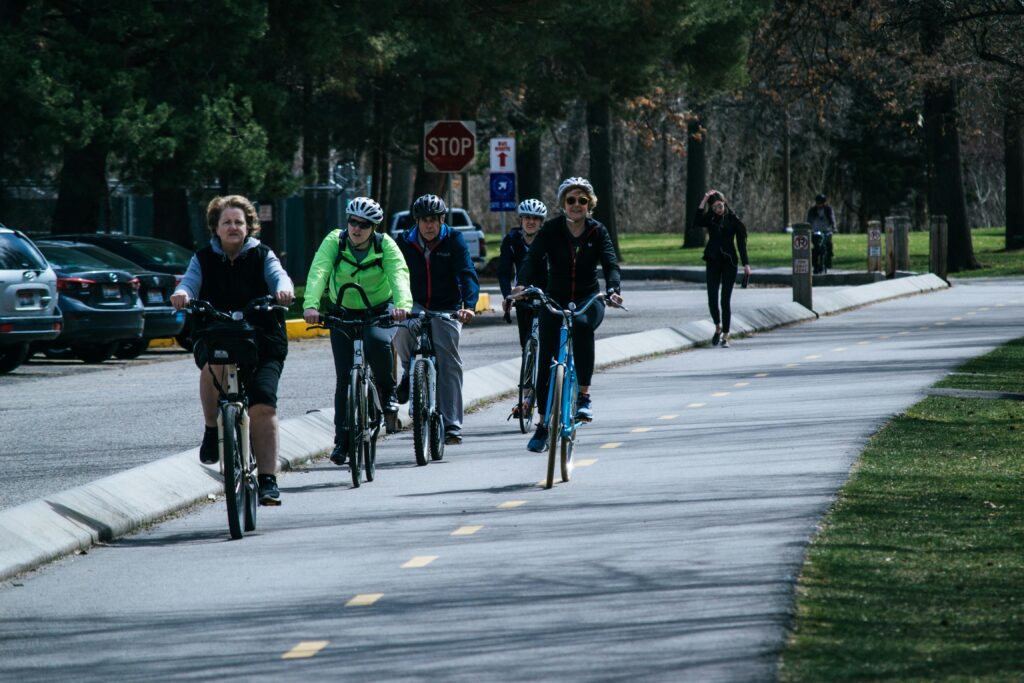Cyclists on our roads have legal rights and responsibilities, as do drivers and pedestrians, and may be entitled to compensation if involved in a bicycle accident. But even those who are aware, may not know how to proceed with a bicycle accident claim, especially as the accident can arise from a range of scenarios and involve multiple parties. For example, claiming compensation will be different if the bicycle crash involves a moving motor vehicle instead of a pedestrian or other cyclists. It will be different again, and in fact the cyclist may be liable for damages, if the accident involves the cyclist crashing into the car door of a stationary vehicle.
These types of claims can be difficult to navigate, which is why it is important to seek legal advice as soon as possible, especially if there are serious injuries (broken bones, permanent physical damage, etc.), further treatments required ongoing, or injuries becoming life threatening. It is important to ensure you are properly compensated to financially support your recovery.
Your Rights as a Cyclist
Cyclists have the same fundamental rights as any other road user. Under road traffic laws, a bike rider is entitled to use public roads and expect a duty of care from other road users. Many people incorrectly assume that cyclists have fewer rights than motorists or that they are automatically at fault in accidents with motor vehicles, which is not the case.
The law recognises cyclists as vulnerable road users and provides specific protections. For example, a cyclist injured on the road may have the right to claim compensation for the accident if it was caused by:
- Negligent driving
- Poor road conditions that should have been maintained
- Defective equipment where manufacturer liability exists
- Accidents caused by pedestrians
- Incidents involving animals on the road
When Can You Make a Claim?
You can make a compensation claim when you’ve been involved in a cycling accident that wasn’t entirely your fault. Valid claims can arise from various scenarios:
- Direct collisions with motor vehicles, whether at junctions, roundabouts, or on straight roads
- Accidents caused by potholes or poor road maintenance
- “Dooring” incidents where vehicle occupants open doors without checking
- Hit and run accidents
- Collisions with pedestrians who have acted negligently
Even in cases where you may be partially at fault, you may still be able to make a claim, though your compensation might be reduced to reflect your share of responsibility. If you’re unsure whether you are eligible or not, you should seek legal advice as soon as possible.
Types of Compensation Available
Compensation for cycling accidents can cover various losses and expenses. This can include treatment for physical injuries, treatment for psychological trauma, ongoing medical care if required, loss of future income, travel expenses, home upgrades if required, and repair or replacement of property, among other costs.
There are two types of claim that are most likely to be relevant for a cyclist injured in an accident, which is an MVA (motor vehicle accident) claim or a public liability claim, depending on where the accident occurs and who it involves. If neither of these are applicable, you may have to take legal action against the specific individual at fault. To understand the best path forward for your claim, it’s best to speak with experts in personal injury law and get advice on your unique circumstances.
Evidence Needed to Support Your Claim
To make a compensation claim, an injured party will need to provide strong evidence to be successful. such as:
- Photographs of the accident scene, including road conditions and vehicle positions
- Details of all parties involved, including witnesses
- Police report reference numbers
- Weather conditions and visibility at the time
- Medical Evidence, such as GP and hospital records, medical reports, treatment plans, prescriptions and documentation of injuries/symptoms.
- Receipts for all expenses related to the accident
- Proof of lost earnings
- Bicycle repair or replacement quotes
- Damaged equipment costs
If you can obtain any additional supporting evidence related to the accident, such as CCTV or dashcam footage, or app data if you were using one at the time, this can help in supporting a claim.
Steps to Make a Claim
Once you have ensured you are safe, contact police to report the incident and have received any medical attention you need, you can take steps for making a compensation claim.
- If you are in a position to do so, you should gather contact details of witnesses and other parties at the scene, and document the accident with photographs.
- Keep records of your medical visits and impact of injuries on your day-to-day activities with a diary.
- Keep receipts related to any and all expenses you incur as a result of the accident.
- Contact a lawyer who specialises in personal injury law to help guide you through the process of submitting a claim.
The claim process typically involves:
- Initial case assessment
- Collection and review of evidence
- Notification to the defendant
- Negotiation with insurance companies
- Settlement discussions
- Court proceedings if necessary
Are you eligible to make a compensation claim? Find out with Burke Mead Lawyers
If you have been involved in a bicycle accident and are unsure if you’re entitled to compensation, you can contact our legal team to learn more about your responsibilities and potential outcomes.
Key Takeaways
- Cyclists have the same fundamental rights as other road users and may be entitled to compensation if involved in an accident that wasn't entirely their fault. Even if partially at fault, cyclists may still make claims with reduced compensation reflecting their share of responsibility.
- Valid compensation claims can arise from various scenarios including collisions with vehicles, accidents caused by poor road maintenance, "dooring" incidents, hit and runs, and negligent pedestrian collisions. Claims may be processed as either Motor Vehicle Accident (MVA) claims or public liability claims.
- Compensation can cover physical injuries, psychological trauma, ongoing medical care, loss of income, travel expenses, home modifications, and property repair/replacement. To support claims, cyclists should collect evidence including accident scene photographs, witness details, police reports, medical records, and expense receipts.
- After ensuring safety and receiving medical attention, the claim process typically involves case assessment, evidence collection, defendant notification, insurance company negotiations, settlement discussions, and court proceedings if necessary. Consulting with a personal injury lawyer is recommended to navigate this complex process.
GET HELP NOW WITH YOUR PERSONAL INJURY
Get in touch with our Personal Injury Compensation team


